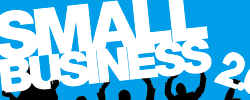
Popular Reading

Credit Exercises
A Jill Anscombe decides to purchase electrical equipment priced at £250. She has insufficient money saved to pay cash and discovers the following alternative methods of financing the purchase:
(a) The shop offers hire-purchase terms of 20% deposit with the
balance payable over 30 months in monthly instalments. The total credit price is £3012.50.
(b) Alternatively the shop offers credit sale terms of £50 deposit
followed by 30 monthly instalments of £8.92.
(c) Her bank is willing to give Jill a personal loan for the purpose
over two years. It will lend £200 at a flat interest rate of 11% per annum.
Which method provides the lowest total cost? And which method entails the lowest outlay per month?
B Bob Carruthers opens a budget account at an outfitters. He pays £10 immediately and agrees to pay a monthly instalment of £10, which gives him revolving credit of up to £240. Interest at 2% per month will be added to the outstanding debt each month. In the first month he buys goods priced at £83, and in the second month further goods priced at £44. Calculate the outstanding debt at the end of two months when Bob will have paid a total of £300.

Tax Relief
A private individual who pays interest on any form of finance for the purpose of enabling him to buy his own home, to extend it, or to improve it, is entitled to tax relief at his top rate of income tax on the interest paid each year. Relief is restricted to interest on a total borrowing of £25,000. This rule applies whatever the source of finance and is not confined to borrowing from building societies.
Thus a bank customer who obtains a personal loan of £800 for the purpose of installing central heating in his home, on which he has a building society mortgage of not more than £24,000,... see: Tax Relief